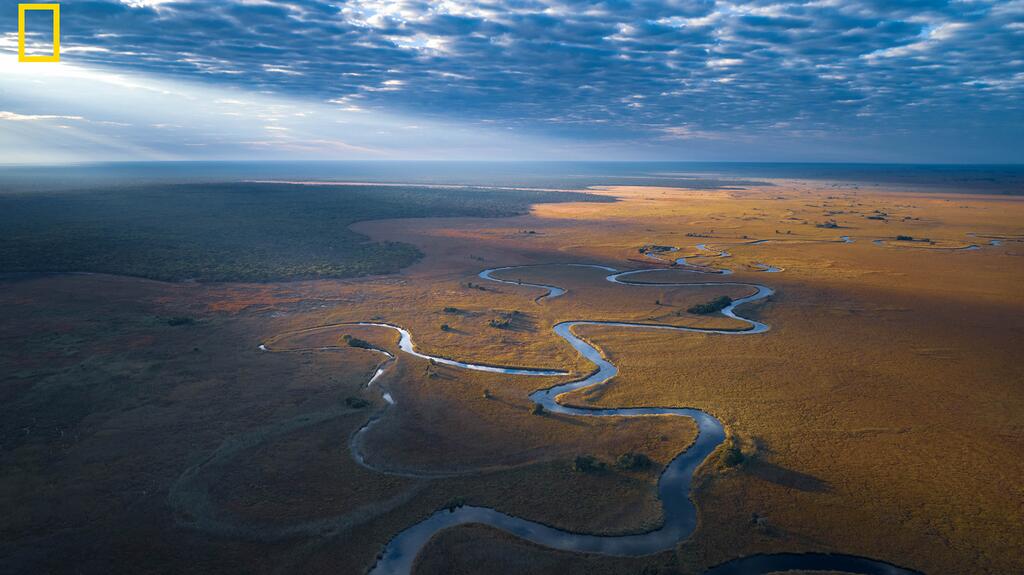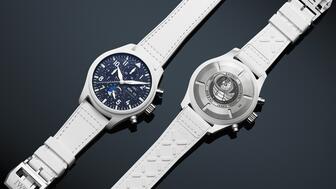De Beers Is Bringing Back Its ‘A Diamond Is Forever’ Ads
It also has a new sourcing program called Code of Origin and a partnership with National Geographic to help protect the Okavango Delta.

In Las Vegas, De Beers Group announced plans for a new marketing campaign built around the iconic tag line but updated for a new generation, said Chief Brand Officer David Prager.
The campaign, which is expected to launch in late October, is the company’s first campaign branded as “De Beers” but not focused on De Beers Jewellers since the late 1990s.
De Beers is releasing limited details about the campaign right now, but a couple things are clear.
It will promote the natural diamonds De Beers Group sells across its properties—at De Beers Jewellers stores, via Forevermark and, eventually, through the new Code of Origin sourcing program. (Lightbox, the company’s lab-grown diamond line, is not branded as De Beers and will not be part of this campaign.)
And De Beers said the campaign will be inclusive, in terms of the people represented, the moments celebrated and the jewelry worn, featuring designs sold at De Beers Jewellers stores and by Forevermark.
In addition to its new campaign, De Beers will also invest in communicating about its environmental and social programs, something the company sees as key in speaking to younger consumers today, millennials and—to an even greater extent—Gen Z, the diverse generation that follows.
In an interview with National Jeweler Wednesday, De Beers Executive Vice President Stephen Lussier said Gen Zers are even more socially aware than their older millennial peers and “very brand-oriented” in the luxury space.
They want to be part of the brands they follow and invest in, and they want those brands to not just “do no harm” but to actively be making positive change in the world.
De Beers does a lot of good in the communities where it mines, Prager said in the same interview, but consumers haven’t necessarily been getting the message.
“No matter how good our story has been, it’s been very difficult to connect a consumer to it.”
In late 2020, De Beers announced “Building Forever,” a set of goals it hopes to achieve by 2030 that are built around four pillars: protecting the environment, fostering equal opportunity, partnering for thriving communities, and leading ethical practices across the jewelry industry.
On Wednesday, the company announced a new partnership that will aid in its environmental goals.
“Okavango Eternal” is a partnership between De Beers and National Geographic aimed at protecting the source waters of the Okavango Delta and the lives and livelihoods they support.
The Okavango Delta is located in northern Botswana and holds protected status. But the delta originates from the unprotected Okavango Basin, which spans southern Angola, eastern Namibia, and northern Botswana, fed by rain from Angola’s highlands.
National Geographic has been working since 2015 to secure permanent, sustainable protection for the basin through its Wilderness Project.
Now, De Beers joins National Geographic in its mission, making a five-year commitment to provide money and resources to protect endangered species in the area, support conservation resources, ensure water and food security for more than 1 million people, develop livelihood opportunities for 10,000, and raise awareness about the importance of the Okavango Delta.

The return of “A Diamond Is Forever” and the National Geographic partnership were just two of the announcements De Beers made Thursday at its annual breakfast event in Las Vegas.
The diamond miner and marketer also announced a new source program that opens up mine-to-market traceability to a broader swath of the industry, De Beers Code of Origin.
Code of Origin will enable participating retailers to say, “This is a De Beers diamond,” even if it is not Forevermark.
Under the program, a unique code will be inscribed on the table of De Beers diamonds larger than 0.30 carats. It will serve as proof that the diamond is natural and conflict-free, originating from one of De Beers’ mines.
De Beers will not be providing the exact mine of origin with each diamond, Lussier explained in Wednesday’s interview. Jewelers will be able to say the De Beers diamond was mined in either Botswana, Namibia, South Africa, or Canada.
“Knowing [exactly] where a diamond comes from; it’s not that important,” Lussier said. “What I really want to know is, what positive impact does it have where it comes from?”
Code of Origin is still in what De Beers called the “learn to scale” phase, though the goal is that the majority of diamonds De Beers sells into the market will carry this code.
De Beers is looking for more development partners for Code of Origin as it aims to expand the program in 2022.
The Latest

Said to be the first to write a jewelry sales manual for the industry, Zell is remembered for his zest for life.

The company outfitted the Polaris Dawn spaceflight crew with watches that will later be auctioned off to benefit St. Jude’s.

A buyer paid more than $100,000 for the gemstone known as “Little Willie,” setting a new auction record for a Scottish freshwater pearl.

Supplier Spotlight Sponsored by GIA.

Anita Gumuchian created the 18-karat yellow gold necklace using 189 carats of colored gemstones she spent the last 40 years collecting.


The three-stone ring was designed by Shahla Karimi Jewelry and represents Cuoco, her fiancé Tom Pelphrey, and their child.

The Manhattan jewelry store has partnered with Xarissa B. of Jewel Boxing on a necklace capsule collection.

Supplier Spotlight Sponsored by GIA

Acting as temporary virtual Post-it notes, Notes are designed to help strengthen mutual connections, not reach new audiences.

The jewelry historian discusses the history and cultural significance of jewelry throughout time and across the globe.

From fringe and tassels to pieces that give the illusion they are in motion, jewelry with movement is trending.

The designer and maker found community around her Philadelphia studio and creative inspiration on the sidewalks below it.

The change to accepted payment methods for Google Ads might seem like an irritation but actually is an opportunity, Emmanuel Raheb writes.

The industry consultant’s new book focuses on what she learned as an athlete recovering from a broken back.

The fair will take place on the West Coast for the first time, hosted by Altana Fine Jewelry in Oakland, California.

Hillelson is a second-generation diamantaire and CEO of Owl Financial Group.

Submissions in the categories of Jewelry Design, Media Excellence, and Retail Excellence will be accepted through this Friday, Aug. 23.


Known as “Little Willie,” it’s the largest freshwater pearl found in recent history in Scotland and is notable for its shape and color.

Clements Jewelers in Madisonville cited competition from larger retailers and online sellers as the driving factor.

Most of the 18th century royal jewelry taken from the Green Vault Museum in Dresden, Germany, in 2019 went back on display this week.

The Pittsburgh jeweler has opened a store in the nearby Nemacolin resort.

With a 40-carat cabochon emerald, this necklace is as powerful and elegant as a cat.

The Erlanger, Kentucky-based company was recognized for its reliability when it comes to repairs and fast turnaround times.

Unable to pay its debts, the ruby and sapphire miner is looking to restructure and become a “competitive and attractive” company.

The trend forecaster’s latest guide has intel on upcoming trends in the jewelry market.

Ingraham said she’ll use the scholarship funds to attend the Women’s Leadership Program at the Yale School of Management.

Moijey Fine Jewelry & Diamonds held a three-week “Mine to Finger 3D Jewelry Program.”





























